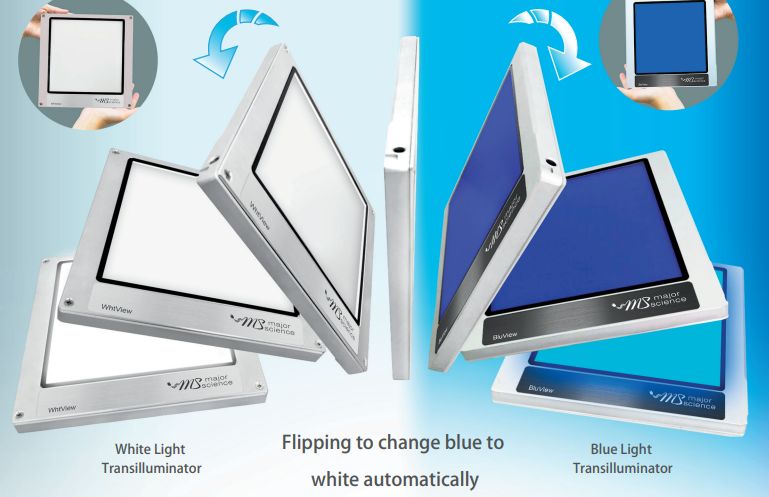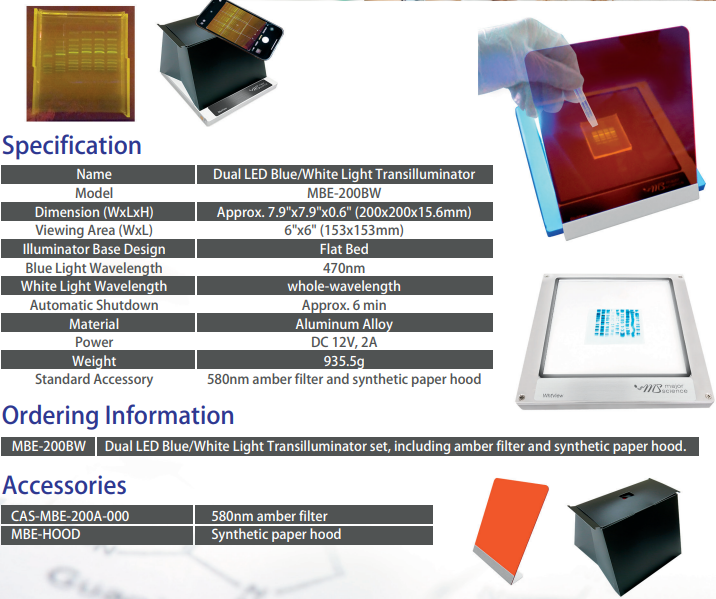In scientific research, accurate illumination and safety are crucial. Laboratories require effective tools for observing experimental results, and advancements in light technology have played a significant role in improving both precision and safety.
Limitations of Traditional UV Illumination

Historically, ultraviolet (UV) light was used for visualizing results such as gels, proteins, and nucleic acids. Although UV light was effective, it posed several issues:
- Health Risks : UV light can cause damage to skin and eyes, requiring researchers to use UV protective gear.
- Complexity: The need for UV shields and other protective equipment added complexity and inconvenience to the research process.
Introduction of Dual LED Technology
The Dual LED Blue/White Light Transilluminator represents a major advancement in laboratory illumination technology. It integrates blue and white LED light sources to offer enhanced functionality and safety.
Technical Features of the Dual LED Blue/White Light Transilluminator

- Safety and Precision:
- LED Types: The transilluminator uses 470 nm blue LEDs for fluorescence detection and full-spectrum white LEDs for general illumination.
- No UV Exposure: By using LED light sources, researchers can avoid UV light, eliminating the need for UV protective equipment and reducing health risks.
- Design and Functionality:
- Viewing Area: It features a 153 x 153 mm (6"x6") flat bed designed to accommodate small to medium-sized gels. This large viewing area ensures that samples are uniformly illuminated.
- Automatic Light Switching: Equipped with a dynamic sensor, the transilluminator automatically switches between blue and white light modes based on its orientation. This feature eliminates the need for manual adjustments and additional components.
- Efficiency and Power Management:
- Automatic Shutdown: The device includes an automatic shutdown function that activates after approximately 6 minutes of inactivity. This feature helps conserve energy and extend the device’s lifespan.
- Dynamic Sensor: The sensor ensures that the appropriate light mode is used for the current orientation of the device, enhancing operational efficiency.
- Compatibility and Durability:
- Imaging Systems: The transilluminator is compatible with various imaging systems, including the Digimage System and the Smartview Simple System. This versatility makes it suitable for different laboratory setups.
- Construction: Built with a durable aluminum alloy base, the transilluminator is designed to withstand the demands of frequent use in a laboratory environment.
- Practical Implications:

- Enhanced Safety: By eliminating UV light, the transilluminator reduces health risks and simplifies the workflow.
- Improved Precision: The use of blue and white LEDs provides accurate and reliable observations, enhancing experimental results.
- User Convenience: Features like automatic light switching and power-saving functions improve the ease of use and operational efficiency.
Future of Laboratory Illumination
The development of light technology, exemplified by the Dual LED Blue/White Light Transilluminator, reflects ongoing improvements in laboratory equipment. These advancements address the limitations of traditional UV systems and provide enhanced safety and functionality. As light technology continues to evolve, future innovations will likely further enhance the precision and safety of laboratory research.
In summary, the Dual LED Blue/White Light Transilluminator is a significant advancement in laboratory illumination. It combines blue and white LED light sources with features designed to improve safety, precision, and user convenience, representing a major step forward in laboratory technology.